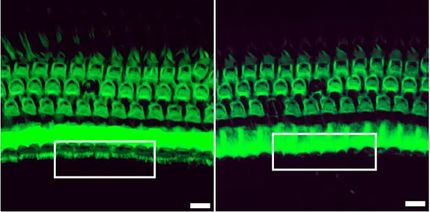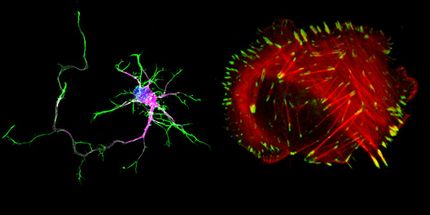Does the human brain have an Achilles heel that ultimately leads to Autism?
CHOOSEn fate: one brain organoid’s tale on Autism
Advertisement
With a revolutionizing novel system that combines brain organoid technology and intricate genetics, researchers can now comprehensively test the effect of multiple mutations in parallel and at a single-cell level within human brain organoids. This technology, developed by researchers from the Knoblich group at the Institute of Molecular Biotechnology (IMBA) of the Austrian Academy of Sciences and the Treutlein group at ETH Zurich, permits the identification of vulnerable cell types and gene regulatory networks that underlie autism spectrum disorders. This innovative method offers unparalleled insight into one of the most complex disorders that challenge the human brain with implications that bring autism clinical research much-needed hope. The results were published on September 13 in Nature.
Compared to other animal species, the human brain has a mind of its own. To develop, the human brain relies on processes unique to humans, allowing us to build an intricately layered and connected cortex. These unique processes also make neurodevelopmental disorders more likely in humans. As an example, many genes conferring a high risk of developing autism spectrum disorder (ASD) are crucial for cortex development. Although clinical studies have shown causality between multiple genetic mutations and autism, researchers still do not understand how these mutations lead to brain developmental defects – and because of the uniqueness of human brain development, animal models are of limited use. “Only a human model of the brain can recapitulate the complexity and particularities of the human brain,” says IMBA Scientific Director Jürgen Knoblich, one of the study’s corresponding authors.
To help crack this black box open, researchers from Jürgen Knoblich’s and Barbara Treutlein’s research groups at IMBA and ETH Zurich developed a technique to screen a complete set of key transcriptional regulator genes linked to autism. This development is especially impactful since the genes of interest can be examined simultaneously within a single mosaic organoid, marking the beginning of an era of intricate, efficient, and expedient genetic screening in human tissue. In the newly developed system, called “CHOOSE” (CRISPR-human organoids-scRNA-seq), each cell in the organoid carries at most one mutation in a specific ASD gene. The researchers could trace each mutation’s effect at a single-cell level and map each cell’s developmental trajectory. “With this high-throughput methodology, we can systematically inactivate a list of disease-causing genes. As the organoids carrying these mutations grow, we analyze the effect of each mutation on the development of each cell type,” says the study’s first and co-corresponding author Chong Li, a postdoctoral fellow in the Knoblich group.
A high-throughput systematic approach
With the CHOOSE system, the IMBA and ETH Zurich teams advance research on disease-causing genes by a whole leap, providing researchers with access to a versatile and high-throughput method that can be applied to any disease and in any human model system. Importantly, CHOOSE considerably speeds up the analysis in comparison to traditional genetic loss-of-function approaches. “We can see the consequence of every mutation in one experiment, thus shortening the analysis time dramatically in comparison to traditional methods, using an approach that for decades was only possible in organisms like the fruit fly”, explains Knoblich. “Additionally, we can still benefit from a hundred years of scientific literature about disease-causing genes.”
Mutating several genes in parallel and tracking their effects generates an enormous amount of data. To analyze this complex dataset, co-corresponding author Barbara Treutlein and her team at ETH Zurich used quantitative bioinformatics and machine learning approaches. “Using this high-throughput single-cell expression data, we can quantify whether a given cell type is more or less abundant due to a given mutation, and we can also identify sets of genes that are commonly or distinctly affected by each mutation. By comparing across all the gene mutations, we can reconstruct the phenotypic landscape of these disease-linked genetic perturbations,” explains Treutlein.
Learning about autism during development
Using the CHOOSE system, the researchers show that mutations of 36 genes, known to put carriers at high risk of autism, lead to specific cell type changes in the developing human brain. They identified critical transcriptional changes regulated through common networks, called “gene regulatory networks” or GRNs. A GRN is a set of molecular regulators that interact with each other to control a specific cell function, explains Li. “We demonstrated that some cell types are more susceptible than others during brain development and identified the networks that are most vulnerable to autism mutations,” he adds.
“With this approach, we learned that autism-causing genes share some common molecular mechanisms,” says Knoblich. Yet, these common mechanisms can lead to markedly distinct effects in different cell types. “Some cell types are more vulnerable to mutations that lead to autism, especially some neural progenitors- the founder cells that generate neurons. This is true to the point that the pathology of autism could already emerge early during brain development. This indicates that some cell types will necessitate more attention in the future when studying autism genes,” says Li.
To confirm whether these findings are relevant to human disorders, the researchers teamed up with clinicians from the Medical University of Vienna and generated brain organoids from two patient stem cell samples. Both patients had mutations in the same gene that caused autism. “The organoids generated from both patients showed marked developmental defects linked to a specific cell type. We could validate these in vitro observations by comparing the organoid structures to the prenatal MRIs of one of the patients’ brains,” says Knoblich, showing that the organoid data closely matched clinical observations.
Beyond the brain and autism…
In addition to gaining unparalleled insights into the pathology of autism, the team underlines the versatility and transferability of the CHOOSE system. “We anticipate that our technique will be widely applied beyond brain organoids to study various disease-associated genes,” says Knoblich. With this new technique, scientists and clinicians gain a robust and precisely controlled high-throughput screening tool that considerably shortens analysis time and provides invaluable insights into disease mechanisms.
Original publication
Chong Li, Jonas Simon Fleck, Catarina Martins-Costa, Thomas R. Burkard, Jan Themann, Marlene Stuempflen, Angela Maria Peer, Ábel Vertesy, Jamie B. Littleboy, Christopher Esk, Ulrich Elling, Gregor Kasprian, Nina S. Corsini, Barbara Treutlein, Juergen A. Knoblich; "Single-cell brain organoid screening identifies developmental defects in autism"; Nature, Volume 621, 2023-9-13

























































